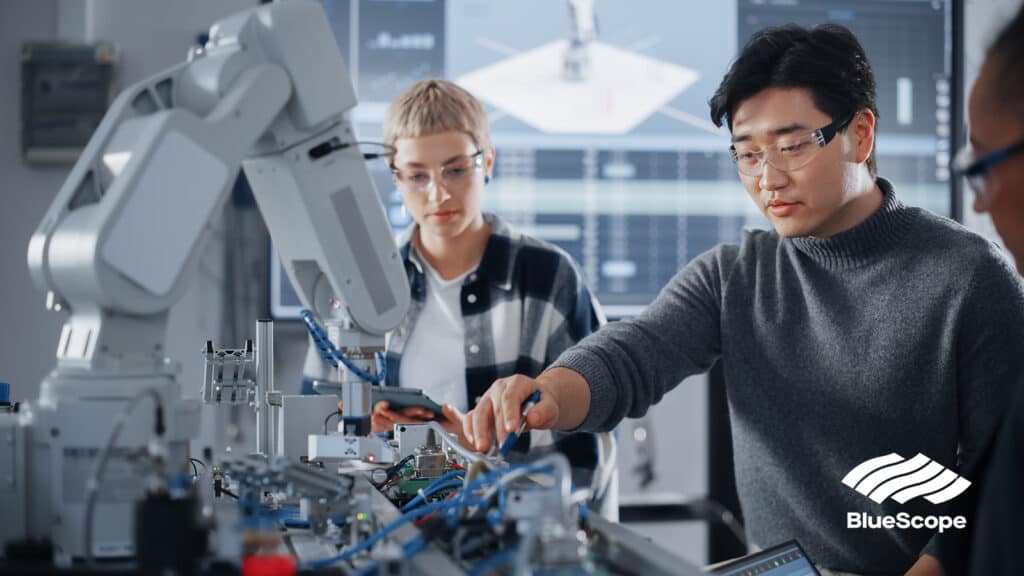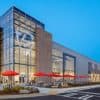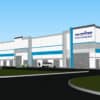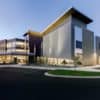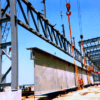BlueScopeX and BlueScope Buildings invite technology startups with an innovation mindset to help transform the building industry
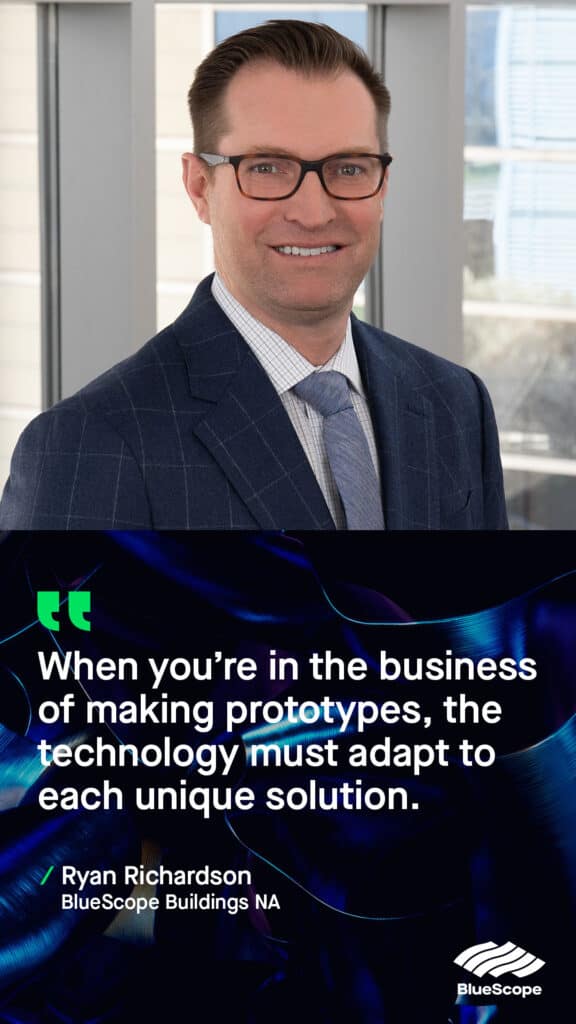
The construction industry has a productivity problem. It’s not new, and it’s not a secret, but it’s a problem.
“Despite aggregate productivity for the U.S. economy having doubled over the past 50 years, the country’s construction sector has diverged considerably, trending downward throughout that period,” reads a January 2023 report from the Becker Friedman Institute at the University of Chicago.
Others have questioned why an industry bearing so much importance to the economy has remained stagnant.
Fixing the productivity challenge in construction will hinge on new ideas in design, manufacturing, and distribution, along with downstream activities at the jobsite, McKinsey & Company says. And technology enablement is a “core pillar of these activities.”
That is what makes Ryan Richardson, who supports innovation and sustainability at BlueScope Buildings North America, so excited about the next chapter for his industry.
“To truly revolutionize an industry, you need to be curious, dare to think differently, challenge norms, and welcome outside approaches,” says Richardson.
While the building industry typically isn’t known for these traits, Richardson points to initiatives underway at his company that may accelerate its innovation path by inviting those who are outside of construction to collaborate on a solution.
BlueScope Buildings and its venture arm BlueScopeX recently launched an accelerator program that seeks to fix some of the construction industry’s biggest challenges. Think: addressing supply chain and labor shortages, as well as carbon emissions, and enabling greater efficiency and productivity.
A rarity in the construction industry, the Buildings of the Future accelerator will challenge start-ups and founders to build, test, and trial technologies that can improve the way non-residential buildings are designed, manufactured, erected, and operated.
And while they’re at it, build a more sustainable world. No small goals here.
Outside perspectives to drive industry revolution
“We want to see startups and founders solve the issues in a way we might not ever think of,” says Dan Kumm, BlueScope Buildings’ senior director of business insights.
Richardson agrees, pointing out that construction is a “prototype business.” While other industries have used technology to advance productivity, the building industry has struggled to do that in a non-repetitive way.
“A lot of the recent technological advancements we have seen work really well in a controlled environment repeating the same process. Auto manufacturing comes to mind with the integration of robotics into assembly lines,” Richardson explains.
“But when you are in the business of making prototypes, the technology must adapt to each unique solution. Until recently, technology has not been smart enough to do that, but recent advancements are demonstrating the ability to improve productivity in non-repetitive applications.
That’s one of the reasons BlueScope Buildings and BlueScopeX are excited to invite innovators from other sectors to create applications that work for the construction industry — which in turn allows startups to access and engage an entirely new industry.
“If there’s a new innovative solution, product, or piece of machinery that needs a jumpstart into the marketplace, we’ve got a really unique and powerful channel for them into the construction industry,” says Kumm.
Buildings of the Future focuses on four key innovation verticals, and both Richardson and Kumm offer examples of the type of innovative applications they’re looking for — while staying open to ideas and solutions that haven’t yet surfaced.

1. Advanced robotics and AI applications
“Every time we construct a building, it’s different. It’s its own unique animal,” says Kumm. “And that’s really a challenge and an opportunity for artificial intelligence (AI) and robotics.”
For example, technology has the potential to speed production of non-repetitive welded steel products, it just hasn’t necessarily been applied that way — yet.
“Robotics can do welding, but that can’t be of real benefit to us unless it’s smart enough to analyze each beam and understand how that beam needs to be welded,” Richardson explains.
In the steel industry, robots often require lengthy setup which in turn hurts productivity measures.
“It takes longer to program and set up the robot to make a piece than it would to make it by hand,” Kumm says.
But with the advanced learning capabilities of AI that draw on insights provided by humans, a robot could learn to trace a weld area and determine what it’s supposed to do on its own without new programming every time.
2. Sustainable and smart building solutions
The Buildings of the Future accelerator program is also seeking tools and solutions that can help design, build, and construct commercial and industrial buildings more sustainably and with greater efficiency.
What might these look like?
“Maybe we’ll find a startup that’s designing products we can use in our building that will decrease a structure’s overall weight,” says Richardson. “Or maybe it’s products that are more recyclable or easier to break down at the end of the building’s life.”
Additionally, the accelerator is interested in sensor technology that can provide building performance insights — which could then lead to less energy use or improved air quality.
Richardson says this is one area where they want to be open to new ideas.
“It can be anything, from the way we design a building itself, to the materials that go into it.”
3. Integrated building solutions
In traditional construction, there are a number of key stakeholders who collaborate on a building, but often in a fragmented manner.
“The owner, designer, contractors, subcontractors, and suppliers have to come together to build,” Kumm points out. “The industry has done its best to try to form efficient relationships but there are so many broken pieces and silos put in place to try to make it work, that it in turn becomes very difficult to be truly productive.”
To address fragmentation, the Buildings of the Future accelerator could reveal solutions designed to integrate with other elements of the building process, which can be pre-assembled as modular solutions off-site.
“Maybe there’s a solution out of there that merges traditional, independent trades behind the scenes in a manufacturing shop where the products get integrated together,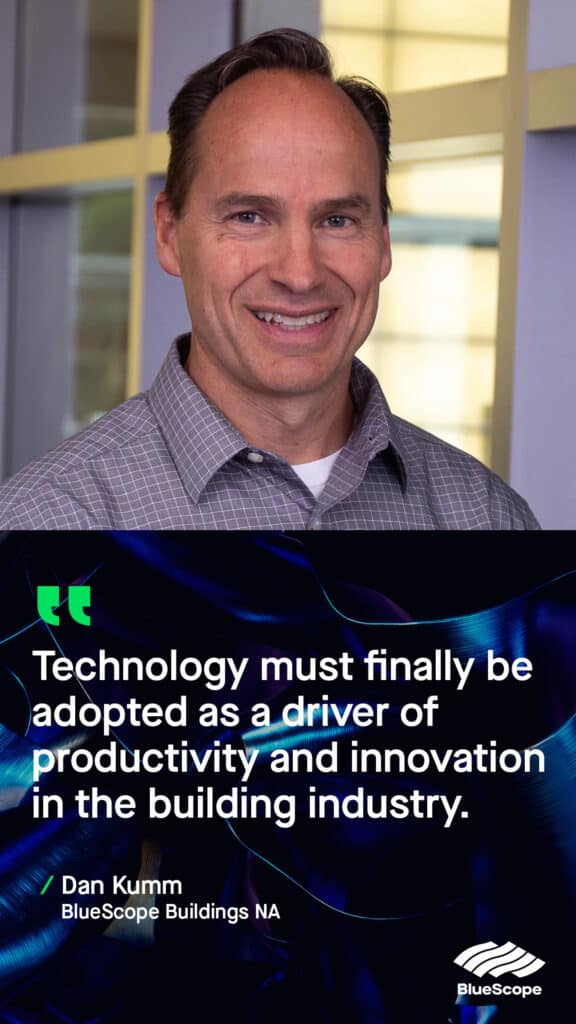 ” Richardson suggests. “And then they could be delivered as a combined unit to the jobsite, making it easier and faster to install.”
” Richardson suggests. “And then they could be delivered as a combined unit to the jobsite, making it easier and faster to install.”
4. Customer experience solutions
Finally, the Accelerator program welcomes data, analytics, and visualization tools that can support the end-to-end building process to better understand and connect fabricators, builders, and ultimately, owners and occupiers.
“There’s a lot of opportunity for us to collect feedback from our customers,” Richardson says. “They’re the ones who are erecting the buildings in the field. And they’re the ones who have data about how easy it is, how long it took, and what skillsets were needed to erect a component on our building.”
Getting that real-time feedback could help design buildings more efficiently, which ties to back creating even smarter building solutions for the future.
“It’s clear that technology must finally be adopted as a driver of productivity and innovation in the building industry,” Kumm says. “And even if your product or idea doesn’t fall into these categories, but can be applied to non-residential building, we still want to hear from you.”
An invitation for innovators
The Buildings of the Future accelerator program is accepting applicants from around the globe through April 20, 2023.
Selected participants will begin the intensive program virtually on Monday, May 1, 2023. Then they will pitch their concepts in person at Massachusetts Institute of Technology (MIT) on Wednesday, June 14, 2023, in collaboration with the MIT Startup Exchange.
The winner of the Accelerator will be awarded $100,000 USD of non-dilutive capital with no strings attached.
“If you’re interested in exploring your idea and partnering with a company that has a unique and powerful channel to the construction industry, then this program should really excite you,” says Kumm.
“This is an opportunity to truly change the way non-residential construction is done — not only from the coolness factor of making change, but leaving a legacy. Technology is converging with climate change on an industry that’s been waiting a century. The Buildings of the Future accelerator can bring it all together.”



